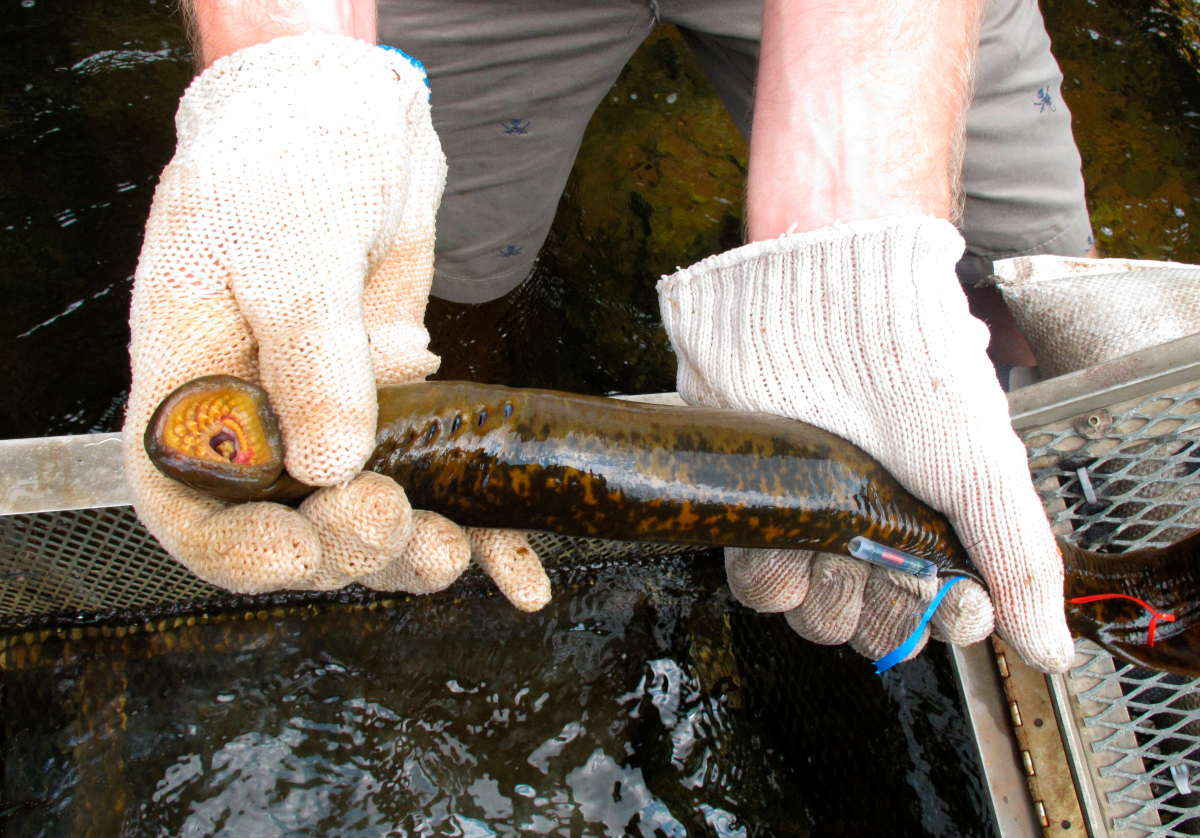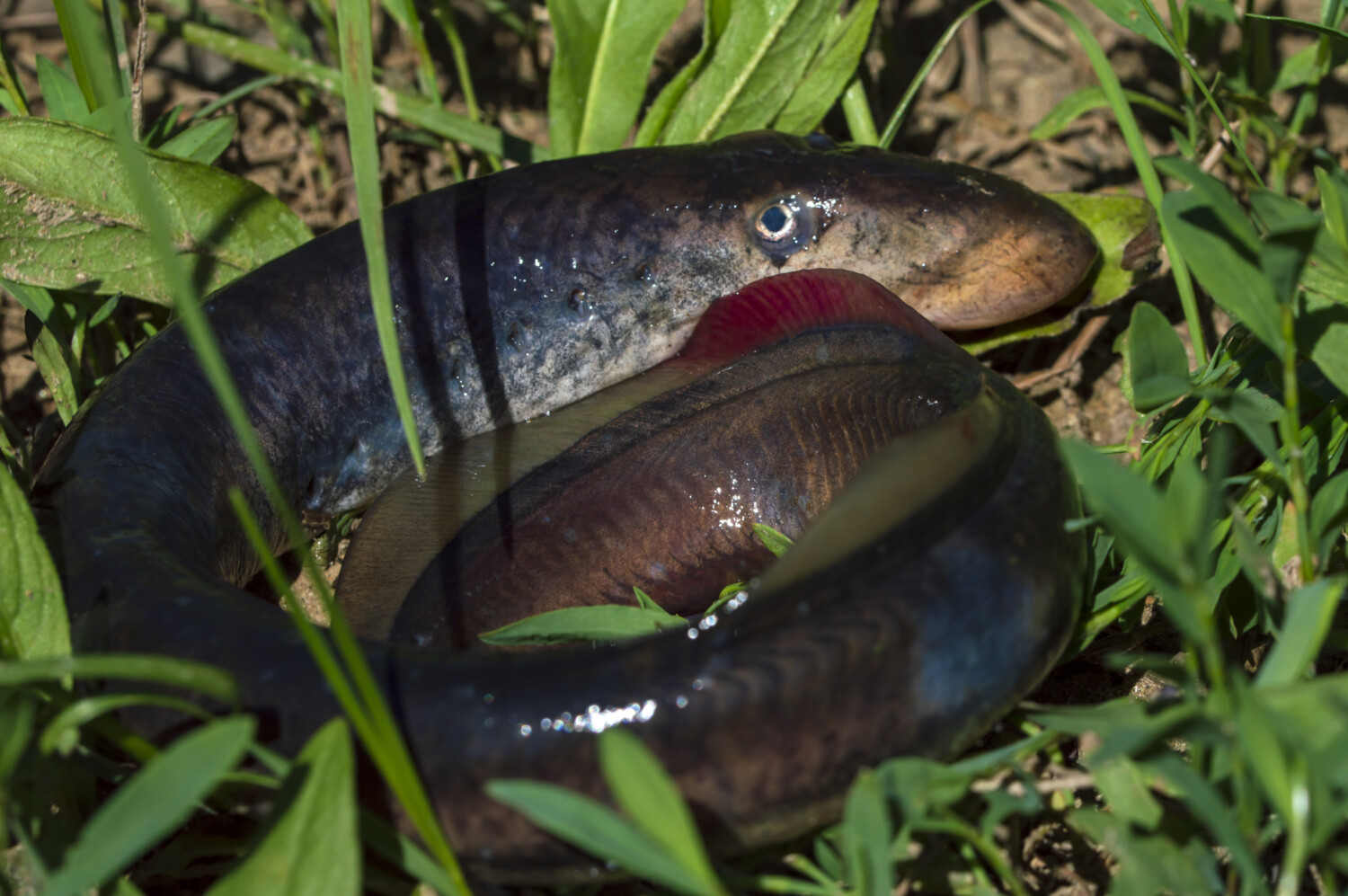Chalk it up to another unfortunate side effect of the COVID-19 pandemic: Blood-sucking lampreys are back.
Sea lampreys are parasitic fish from the northern Atlantic and Baltic, western Mediterranean and Adriatic seas that have cartilage skeletons instead of bones. Their wide, jawless mouths have a circular row of teeth and a rough, raspy tongue that allow them to latch onto a host and feast on its body fluids, such as blood. While it sounds like the plot line of a campy horror movie, this is actually happening in real life.
The fish gained access to the freshwater Great Lakes through a canal in the 1830s and became established in all five lakes not long after. Agencies like the Great Lakes Fishery Commission, the U.S. Fish and Wildlife Service (USFWS), and Fisheries and Oceans Canada (DFO) have battled the sea lamprey population since 1958 through chemical lampricides and physical barriers and traps. Such efforts helped to reduce the number of these “vampire fish” by 95%.

MORE: Leatherback sea turtle nest discovered on Outer Banks island is first since 2012
But COVID-19 restrictions prevented many of these operations, meaning that the sea lampreys are starting to reestablish themselves across the Great Lakes, including Lake Superior, Lake Michigan and Lake Erie. This is because in 2020, only 25% of streams could be treated, and in 2021, only 75% could be treated.
It might sound like a short period of time, but robust invasive species like sea lampreys often only need a small window of opportunity to regain their stranglehold over vulnerable habitats. Experts say the population could grow quickly in the next year or two, and the numbers are trending upward.
“You never want any delays, you never want a lack of focus or lack of pushing things out time-wise,” Great Lakes policy director at the National Wildlife Federation, Marc Smith, told Undark Magazine. “That’s kind of what COVID did.”
Marc Gaden, communications director of the Great Lakes Fishery Commission, agrees.
“If you ease up control, even for a short time — like two years in COVID — they’ll take advantage of that,” he told Undark. “It would be Pollyannaish to think there’s not going to be any effect.”
But before you panic and envision sea lampreys preying on swimmers, these lampreys mainly pose a danger to fish. They attach to cold-water organisms, not warm-blooded humans.
“One might latch on if the person is really cold or if the lamprey is starving to death,” Cory Brant, a research assistant at Michigan State University, explained to the Great Lakes Echo.
Fortunately, there are no known instances of this happening.

MORE: Watch a sea otter surprise surfers by climbing aboard
The main danger to humans rests in the fact that these lampreys can — and have — decimated the trout population, as well as other commercially fished populations like the sturgeon, carp, whitefish and perch.
Before control measures were implemented in the last century, 85% of fish not outright killed by lampreys displayed signs of attack, according to Michigan State University. And the 100 million pounds of fish killed annually by lampreys decimated the fishery-based economy supported by the Great Lakes.
Lampreys — which are a valuable keystone species in their native ecosystems — have the ability to destroy livelihoods, leading to crashing property values and economic decline. It also impacts those who fish for recreation.
“Without sea lamprey control there would be no sport fishing on the Great Lakes,” former USFWS employee Mark Holey told the Door County Pulse. “Can you tell me of a sea lamprey problem? No, maybe not like you used to be able to tell, but that’s because they’re spending around $15 to $20 million a year to manage the number so you can have these fisheries.”
If you see a sea lamprey, you can report it to the Invading Species Hotline at 800-563-771 or call the Sea Lamprey Control Centre of Fir visit www.invadingspecies.com to report a sighting. You can also call the Sea Lamprey Countrol Centre of the DFC at 800-553-9091 with questions. If you catch a fish that has a lamprey attached to it, do not throw it back in the water. Instead, kill it and throw it in the trash.
This story originally appeared on Simplemost. Check out Simplemost for additional stories.


